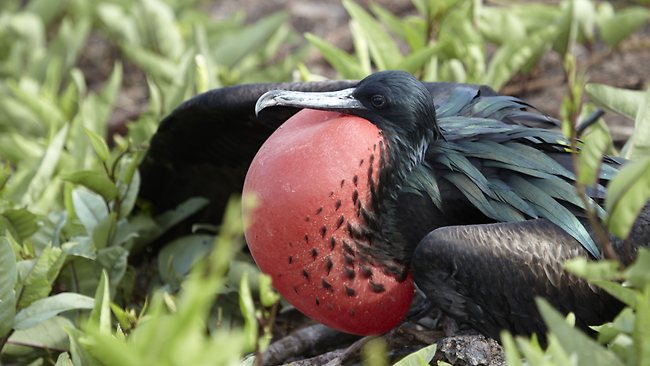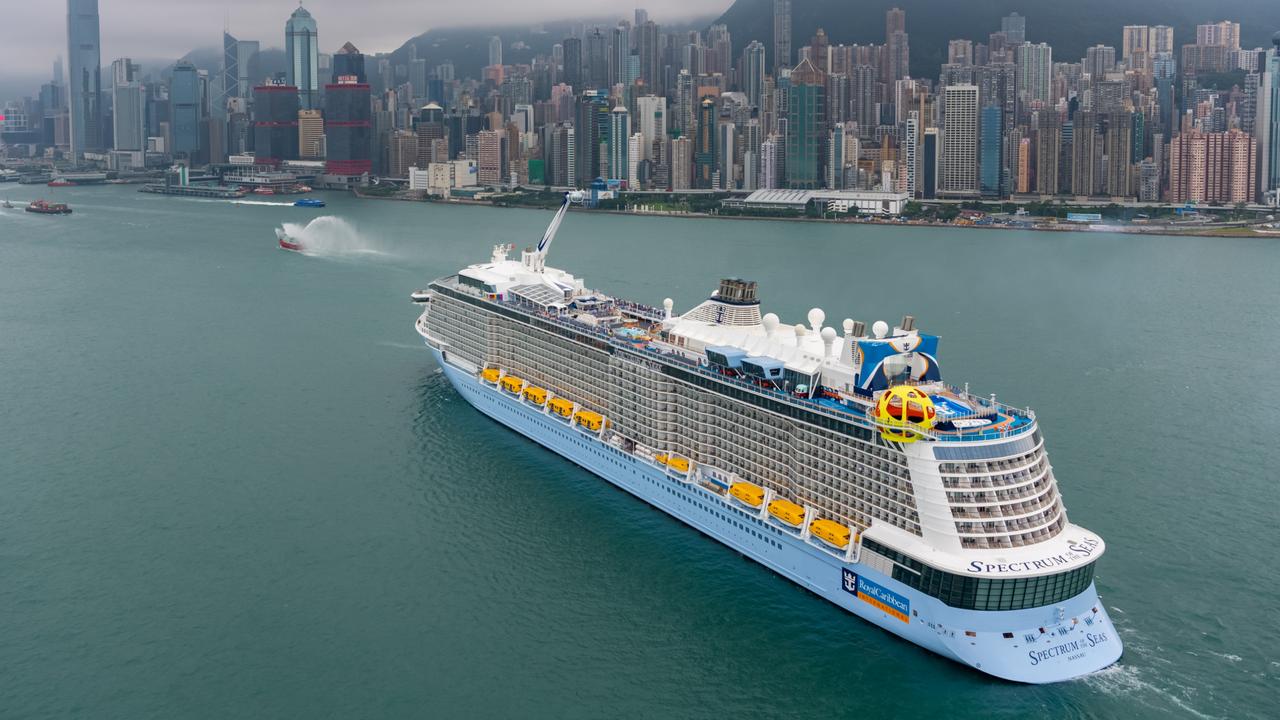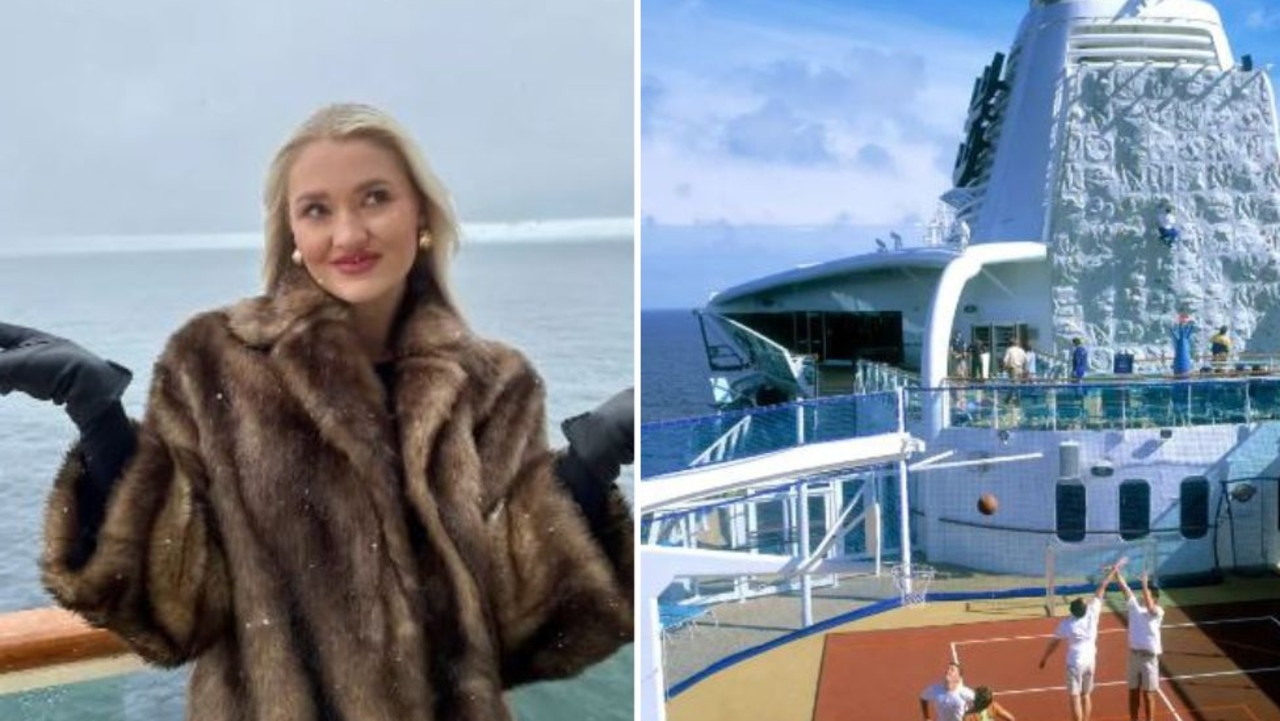Journey to earth's 'most astonishing place'
A CRUISE to the Darwinian paradise islands is a great way to see the World Heritage site and its many species, writes Christina Pfeiffer.

ONE of the collective nouns for iguanas is a mess.
I realise why when I see messy tangles of iguanas sprawled along the beach on Santiago Island.
The collective noun for lizards is a lounge. It's a description I come to appreciate during my four-day cruise from Baltra to Santa Cruz, Santiago, Genovesa, North Seymour and San Cristobal islands.
There are few places in the world where collective nouns come in as handy as they do in the Galapagos Islands, which are famous for inspiring Charles Darwin with ideas that led to the formulation of the theory of evolution.
The 14 islands and more than 120 islets and rocks, about 1000km off the South American shore, were among the first group of sites added to the World Heritage list in 1978. They are a natural lounging zone for lizards and other kinds of wildlife, including 1300 species found nowhere else.
If there were a collective noun for tourists to these islands, I'd call them a gape. The dictionary defines gape as "to gaze stupidly or in open-mouthed surprise or wonder", which is something our group of expedition cruise passengers did a lot during shore visits.
Our four-night cruise begins in Baltra when Zodiacs transfer our Scenic Tours group of 24 passengers aboard the MV Galapagos Explorer II, a five-deck luxury ship with 52 cabins. It has a lounge, piano bar, sun deck and an outdoor deck with another bar and two jacuzzis. There's also a medical room, a shop and a small library.
Breakfast and lunch are buffet spreads, with a choice of food including tasty local dishes such as ceviche (a spicy and sour seafood soup served cold), while dinner is a three-course meal with two glasses of house wine included in the tariff.
My classic suite on the Marco Polo deck has a double bed and a lounge, mini bar, flat-screen television, plenty of closet space and biodegradable amenities in the ensuite bathroom. It's comfortable but the colour scheme is a touch outdated and furnishings are beginning to show wear and tear.
The highlights are the shore excursions, which are led twice daily by knowledgeable local naturalists who are passionate about preserving the region's unique ecosystem.
Five years ago, threats from the unregulated expansion of tourism, overfishing and encroaching invasive species put the Galapagos on the list of World Heritage in Danger places.
The Ecuadorian Government addressed these issues by tightening immigration and quarantine measures and setting up a $US15 million ($A14.5 million) Invasive Species Fund.
Although the Galapagos has now been removed from the list, conservationists are still concerned about the future of a destination that Sir David Attenborough has called "the most astonishing place on Earth".
Over four days, we see hundreds of lizards and iguanas, pods of sea lions, bushels of Sally Lightfoot crabs and a lonely penguin.
On Santa Cruz Island, we meet Lonesome George, the sole survivor of a colony of land tortoises from Pinta Island and slosh through mud to search for wild tortoises in the rain at the Primicias ecological reserve. On the same island, near Bachas Beach, we're lucky enough to spot a few pink flamingos stalking through a lagoon.
At San Cristobal Island, the sea lions are on the rampage; they commandeer small boats in the harbour; and laze on the esplanade, just a few steps away from shops and cafes.
We visit one of the archipelago's out-of-the-way islands, Genovesa Island, where a flight of steps at El Barranco leads us to the top of a 25m cliff.
There are birds everywhere: trees full of red-footed boobies, tropic birds, gulls and storm petrels. There are Nazca boobies sitting on eggs on the ground and chicks peering out from under bushes. I can't help gaping at the shiny, black male frigate birds, puffed up with red balloon-like gullets to attract the females.
On North Seymour Island, blue-footed boobies take turns to incubate eggs; their blue feet look like a designer shade from a decorator's colour chart.
It's not just the quantity of wildlife that makes the Galapagos Islands special. Even more astonishing is the fearless disregard the animals and birds have for people.
At Darwin Bay, I wade in a river of knee-deep water while a few metres away, a young sea lion practices graceful loops. Back on the beach, a three-month-old baby sea lion pursues our group with an urgency driven by hunger.
One of the rules is you're not to approach within 2m of the wildlife but try telling that to a bleating baby sea lion in search of its mother.
Much of the wildlife in the Galapagos is underwater and there's a snorkelling trip each day.
On our last day, a shiver of sharks circles the ship as we board Zodiacs for a deep-water snorkelling excursion around North Seymour Island; puffy white clouds decorate a brilliant blue sky as we slip into the glistening emerald water; a hammerhead shark lurks in the depths below; and sea lions lie camouflaged on rocky ledges.
Near the rocks, I have a front-seat view of a sea lion performing figure-eight loops in the water. It catapults towards me then backs away in a spellbinding water ballet.
The writer was a guest of Scenic Tours.
--
Go2
GALAPAGOS ISLANDS
Getting there
Qantas flies from Sydney to Santiago, with connections on LAN to Quito or Guayaquil. Tame and Aerogal have flights to the islands.
Cruising around
Scenic Tours has a 32-day South American adventure - that includes four nights aboard MV Galapagos Explorer II. Ph 1300 SCENIC (723 642) or see scenictours.com.au
* Did you know? Christopher Columbus Archipelago is the official name of the Galapagos Islands



